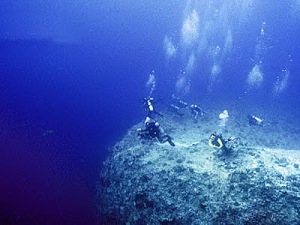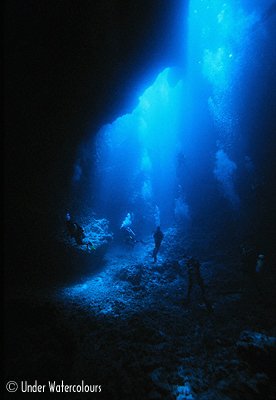Located in the Western Pacific Ocean, the tropical paradise islands of Palau form the Western chain of the Caroline Islands. The islands were once inhabited by Palauan settlements. The use of these islands were by seasonal occupation and the use of the marine ecosystem date back to 3,100 B.C. and expand over 2,500 years ago. Only gaining its independence 20 years ago in 1994, the Palau Islands were formerly part of the United Nations Trust Territory of the Pacific under United States administration. Palau is now its own country, the Republic of Palau.
The mostly uninhabited islands are home to 21,000 people that spread across 250 to 400+ islands and are mostly used for cultural and recreational purposes. These islands are limestone formations that have been eroded over millennia to create exquisite mushroom-shaped islands, limestone overhangs, discreet coves, white sand beaches and turquoise lagoons. The islands are covered in lush vegetation and bright green foliage from top to bottom. The islands span 47 square kilometers and are up to 207 meters high. The Palau Islands are formed by ancient coral reefs and can be seen around the islands. These coral reefs offer some of the most diverse diving sites on the planet. Aside from offering stunning beauty, the Palau Islands have multiple attractions:

Blue Corner is a famous diving site for experienced divers. Due to strong currents this site attracts many sharks and drops off thousands of feet into the deep unknown. Many different wildlife species can be seen in this area, ranging from turtles, many species of fish, eels, manta rays, barracuda and many species of sharks.

The Blue Holes are two holes that exist on the outer face of a reef. The first hole is about 15 feet in diameter and about 45 feet down, the second larger hole starts at about 85 feet down. These two holes enter into a cavern, at the lowest point the cavern is 120 feet deep. Within the cavern there is an additional narrow entrance that leads to a smaller cave. This cave is called The Temple of Doom, it gets its name from the perished divers who have lost their life inside the cave. These deep caverns are not for the faint-hearted or inexperienced divers.

German Channel, which got its name from the Germans, created the man-made channel to ship phosphate from the island of Anguar to Koror. Today, the channel separates the Ngemelis and Ngercheu islands and is the main passageway to outer dive sites. The German Channel is known as a "cleaning station" for manta rays and sharks alike who get "cleaned" by fish at about 55 feet down.

Jellyfish Lake is made up of millions of Golden Jellyfish. This area is accessible by traveling through small tunnels in the limestone or by beach trail. For the most part, is greatly isolated from the outside waters and species. These millions of jellyfish migrate everyday with the sun across the lake. At noon, they bask in the sunlight, absorbing as much as they can as they need sun to survive, and then make their way back to the western side of the island to wait for the dawn of the new day. It is possible to swim with the jellyfish since their stings are not powerful enough to cause harm to humans. To swim with the jellies, you must purchase a $100 pass that is good for 10 days.
Whether you travel to Palau to dive, swim with the jellies or simply for the spectacular scenery, these tropical paradise islands are a site worth the stop.

Blue Corner is a famous diving site for experienced divers. Due to strong currents this site attracts many sharks and drops off thousands of feet into the deep unknown. Many different wildlife species can be seen in this area, ranging from turtles, many species of fish, eels, manta rays, barracuda and many species of sharks.

The Blue Holes are two holes that exist on the outer face of a reef. The first hole is about 15 feet in diameter and about 45 feet down, the second larger hole starts at about 85 feet down. These two holes enter into a cavern, at the lowest point the cavern is 120 feet deep. Within the cavern there is an additional narrow entrance that leads to a smaller cave. This cave is called The Temple of Doom, it gets its name from the perished divers who have lost their life inside the cave. These deep caverns are not for the faint-hearted or inexperienced divers.

German Channel, which got its name from the Germans, created the man-made channel to ship phosphate from the island of Anguar to Koror. Today, the channel separates the Ngemelis and Ngercheu islands and is the main passageway to outer dive sites. The German Channel is known as a "cleaning station" for manta rays and sharks alike who get "cleaned" by fish at about 55 feet down.

Jellyfish Lake is made up of millions of Golden Jellyfish. This area is accessible by traveling through small tunnels in the limestone or by beach trail. For the most part, is greatly isolated from the outside waters and species. These millions of jellyfish migrate everyday with the sun across the lake. At noon, they bask in the sunlight, absorbing as much as they can as they need sun to survive, and then make their way back to the western side of the island to wait for the dawn of the new day. It is possible to swim with the jellyfish since their stings are not powerful enough to cause harm to humans. To swim with the jellies, you must purchase a $100 pass that is good for 10 days.
Facts
http://www.amusingplanet.com/2013/10/the-rock-islands-of-palau.html
http://www.underwatercolours.com/palau/dives/bluecorner.html
http://www.fishnfins.com/v2/en/dive-sites/blue-holes.html
http://www.fromquarkstoquasars.com/6-beautiful-places-on-earth-that-are-secretly-horrifying-1-of-3/
http://animals.nationalgeographic.com/animals/invertebrates/golden-jellyfish/
Pictures
http://palauandorder.wordpress.com/2010/10/30/under-the-sea-just-you-and-me/
http://www.underwatercolours.com/palau/dives/bluehole.jpg
http://www.allposters.com/-sp/Aerial-View-of-Divespot-German-Channel-Micronesia-Palau-Posters_i8995643_.htm
http://delightfuldepartures.blogspot.com/2013/01/passport-to-palau-jellyfish-lake.html
http://blog.nature.org/science/2013/07/10/the-traveling-naturalist-swimming-with-jellyfish-in-palau/
http://cnpics.blogspot.com/2011/05/beautiful-quaint-island-of-palau.html
http://www.palautours.com/files/category-palau-articles.html
http://www.beautifulplacesguide.com/palau-islands/
http://www.tropicalbeachgetaways.com/palau/
https://sites.google.com/site/natureworld7/natureofpalau
http://www.underwatercolours.com/palau/dives/bluecorner.html
http://www.fishnfins.com/v2/en/dive-sites/blue-holes.html
http://www.fromquarkstoquasars.com/6-beautiful-places-on-earth-that-are-secretly-horrifying-1-of-3/
http://animals.nationalgeographic.com/animals/invertebrates/golden-jellyfish/
Pictures
http://palauandorder.wordpress.com/2010/10/30/under-the-sea-just-you-and-me/
http://www.underwatercolours.com/palau/dives/bluehole.jpg
http://www.allposters.com/-sp/Aerial-View-of-Divespot-German-Channel-Micronesia-Palau-Posters_i8995643_.htm
http://delightfuldepartures.blogspot.com/2013/01/passport-to-palau-jellyfish-lake.html
http://blog.nature.org/science/2013/07/10/the-traveling-naturalist-swimming-with-jellyfish-in-palau/
http://cnpics.blogspot.com/2011/05/beautiful-quaint-island-of-palau.html
http://www.palautours.com/files/category-palau-articles.html
http://www.beautifulplacesguide.com/palau-islands/
http://www.tropicalbeachgetaways.com/palau/
https://sites.google.com/site/natureworld7/natureofpalau






